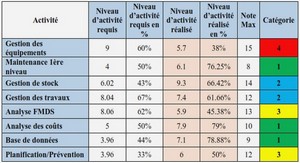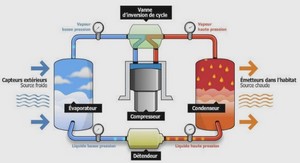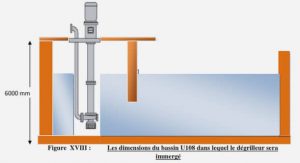Variabilité de la zone de minimum d’oxygène du Pacifique Est équatorial au cours du Quaternaire récent
Variabilité dans l’OMZ durant la dernière période glaciaire
Introduction
Records of the oxygen isotope composition in Greenland ice cores show seesaw-like air temperature variations at the millennial-scale over the last glacial period that are often referred to as Dansgaard-Oeschger events (DO) [Dansgaard et al., 1993; Johnsen et al., 2001]. A few cold DO events in Greenland were associated with an ice rafted debris layer in the north Atlantic Ocean and are referred to as Heinrich events (H), that corresponded to large Chapitre III. Variabilité dans l’OMZ durant la dernière période glaciaire 98 continental ice discharges into the ocean [Heinrich, 1988; Broecker et al., 1992]. Anomalously fresh water inputs into the north Atlantic Ocean are thought to have impacted North Atlantic Deep Water (NADW) formation and to have reduced poleward heat transport, leading to a large temperature decrease over the north Atlantic Ocean ([Clement and Peterson, 2008] and references therein). H-DO scale climate variability is thought to have extended to lower latitudes into Oxygen Minimum Zones (OMZ) within the northeastern Pacific Ocean and the Arabian Sea [Schulz et al., 1998; Schulte et al., 1999; Altabet et al., 2002; Ortiz et al., 2004]. Proxy records and modeling studies suggest that the OMZ intensified during interstadials (warm DO events), and weakened during stadials (cold DO events) and H events, although the mechanisms responsible for these teleconnections remain unknown. The intensification of the OMZ occurs as a result of higher primary production and/or less oxygen supplied through oceanic ventilation. Several studies, conducted along the American margin within the northeastern Pacific Ocean, display evidence for a reduction in exported biogenic fluxes [Dean et al., 1997; Hendy et al., 2002; van Geen et al., 2003; Hendy et al., 2004; Ivanochko and Pedersen, 2004; Ortiz et al., 2004; Hendy and Pedersen, 2005; Dean et al., 2006; Hendy and Pedersen, 2006; Dean, 2007], and of a higher pore water oxygen content during cold periods (last glacial maximum (LGM) and stadials) [Dean et al., 1997; Cannariato and Kennett, 1999; van Geen et al., 2003; Hendy et al., 2004; Ivanochko and Pedersen, 2004; Hendy and Pedersen, 2005; Dean et al., 2006; Dean, 2007; Nederbragt et al., 2008]. Based on a simple advection-diffusion model, calibrated with chlorofluorocarbons, both ventilation and productivity changes are suggested to have had a strong impact on the dissolved oxygen content in the present northeastern Pacific Ocean [van Geen et al., 2006]. In fact, a lower organic carbon content within the sediments during cold events can be explained by either reduced productivity linked to weaker coastal upwelling [Hendy et al., 2004; Ortiz et al., 2004; Dean et al., 2006], and/or by better oxygenation of the water column due to enhanced ventilation [Zheng et al., 2000; Hendy et al., 2004; Ivanochko and Pedersen, 2004; Hendy and Pedersen, 2005; Dean, 2007]. Our study sought to evaluate the relative importance of productivity and ventilation changes as the processes responsible for modulating the past variability of the northeastern Pacific OMZ on glacial/interglacial, as well as H-DO timescales. For this objective, we selected core MD02-2508 (MD08; 23°27.91’N, 111°35.74’W, 606 m water depth, Figure 1), retrieved from the northern limit of the present OMZ within the Eastern Tropical North Pacific (ETNP). The core’s location is highly sensitive to changes in productivity and ventilation, and thus to OMZ extension and intensity through time. In this work, we present a geochemical dataset that includes a decadal-resolution elemental analyses of the sediment (detrital fraction, carbonates, and organic matter, as well as some redox-sensitive elements) obtained using an X-ray fluorescence (XRF) core scanner, and the concentrations of a series of redox sensitive trace elements measured using an Inductively Coupled Plasma Mass Spectrometer (ICP-MS). We focused our attention on two categories of trace elements that become insoluble under oxygen-depleted conditions in the sediment – elements whose dissolved concentration in the water column is “nutrient-like” (e.g. Cd, Cu, and Ni) and elements whose dissolved concentration is conservative (e.g. U and Mo). If the water column is sufficiently depleted in dissolved oxygen (such as in the OMZ), “nutrient-like” elements are preserved in the sediments and expected to indicate export production (see section 3.2 for detail); whereas conservative elements are expected to essentially vary with the pore water oxygen content, which reflects the bottom water oxygen concentration and local export production [Calvert and Pedersen, 1996; Nameroff et al., 2002; Algeo and Maynard, 2004; Tribovillard et al., 2006]. Using a statistical analysis, we attempt to separate the effect of export production and bottom water oxygenation in order to provide information on the mechanisms linking high and low latitude climate. The proposed mechanisms are discussed herein by comparing our results to other proxy records and modeling studies.
Modern hydrographic settings and productivity
Surface and subsurface oceanography within the eastern north Pacific Ocean margin is mainly driven by the California Current System (Figure 1a), the northeastern section of the North Pacific Gyre [Tomczak and Godfrey, 2003]. The California Current (CC) transports the cool and fresh water mass, referred to as Subarctic Water (SW) [Durazo and Baumgartner, 2002]), southward along the North American margin from Vancouver Island (50ºN) to 25°N, and then turns westward off Baja California (World Ocean Atlas 2005, [Hickey, 1998]). SW occupies the upper 300 m of the water column within the northeastern Pacific Ocean, and is characterized by low salinity (32.5 to 34.0 psu) (Figure 1 B). As a result of active renewal, SW also displays a high oxygen content (5 mL/L, [van Geen et al., 2006]; Figure 1c). From the lower limit of the CC down to approximately 1000 m, North Pacific Intermediate Water (NPIW) occupies the water column along the California margin [Durazo and Baumgartner, 2002]. NPIW is formed by intense cooling and sea ice formation within the Okhotsk and Bering Seas [Talley, 1991; Takahashi, 1998; Shcherbina et al., 2003] and flows equatorward to approximately 20°N where it turns westward ([Hendy and Kennett, 2003] and reference therein), and then mixes with Equatorial Subsurface Waters (ESsW see below; Figure 1b) [Durazo and Baumgartner, 2002]. The oxygen content of NPIW decreases from the source area toward the eastern tropical Pacific Ocean, due to organic matter degradation and mixing with highly oxygen-depleted ESsW. All of these processes contribute to the formation of an OMZ at intermediate water depths (500-1000 m, Figure 1c) within the Eastern Subtropical North Pacific (ESTNP) [Paulmier and Ruiz-Pino, 2009]. Figure Article 1. 1: Mean annual SST and a simplified map of surface and intermediate depth currents (A). Surface currents are indicated with dark gray arrows (CC for the California Current, SEC for the South Equatorial Current), whereas the current and flow direction of the water mass at intermediate depths are shown with light gray arrows (EUC for the Chapitre III. Variabilité dans l’OMZ durant la dernière période glaciaire 101 Equatorial UnderCurrent, NPIW for North Pacific Intermediate Water). Coastal subsurface currents are indicated with a white arrow (CU for the California Undercurrent). The position of core MD02-2508 (red diamond) and the cores discussed in the text (white dots) are also indicated. The white dot filled with a cross corresponds to the NH15P core and the sediment trap study by [Nameroff et al., 2002]. B) The salinity; and C) the oxygen content from oceanographic transects taken along the North American margin (100 km wide, right upper panel). Major water masses are displayed in (B) as follows: SW for Subarctic Waters transported with CC and ESsW (for Equatorial Subsurface Water). The position of the OMZ in the Eastern Tropical North Pacific (ETNP) and the Eastern SubTropical North Pacific (ESTNP) are shown in (C). The figure was generated using the Ocean Data View software (http://odv.awi.de) from the World Ocean Atlas 2005 dataset(http://www.nodc.noaa.gov/OC5/WOA05/pr_woa05.html). South of 20°N, the water properties at intermediate water depths (100-700m) are very different from those of northern water masses as a result of a southern origin ([Hendy and Kennett, 2003] and reference therein). AntArctic Intermediate Water (AAIW) combined with SubAntarctic Mode Water (SAMW), is formed at southern high latitudes and spreads over the south Pacific Ocean [McCartney, 1977]. A positive evaporation/precipitation balance in the central South Pacific Ocean increases surface and subsurface water salinity. The water mass then zonally crosses the Pacific Ocean basin via the Equatorial UnderCurrent (EUC) and reaches the Central American coast while mixing with northern component water. The resulting ESsW (34.5 to 35.0 psu) [Durazo and Baumgartner, 2002] that mixes with upwelled North Pacific deep water corresponds to “Southern Component Intermediate Water”, as referenced by Hendy and Kennett [2003]. The oxygen content of ESsW is highly depleted (0.2mL/L) below 100 m between 10°N and 25°N, as a result of its distance from the formation zone, high productivity along its pathway (equatorial and coastal upwelling), and slow ventilation. The upper ETNP OMZ corresponds to the ESsW (Figure 1c) [Paulmier and Ruiz-Pino, 2009]. Denitrification occurs in the upper water column within the ETNP and increases the δ 15N of residual nitrate within the ESsW [Voss et al., 2001; Pichevin et al., 2010]. ESsW is transported northward along the margin off Baja California by the California Undercurrent (CU, Figure 1a) within subsurface water (roughly 200-300m, [Hickey, 1998; Pierce et al., 2000; Durazo and Baumgartner, 2002; Pérez-Brunius et al., 2006; Gay and Chereskin, 2009]). Despite the fact that the CU has been identified to have a nearly continuous flow between the Santa Barbara Basin (34°N) and 50°N [Pierce et al., 2000], CU behavior is not well-known off Baja California. Worth noting is that the water mass transported by the CU (derived from ESsW) may be the main nutrient source during coastal Chapitre III. Variabilité dans l’OMZ durant la dernière période glaciaire 102 upwelling at the core site [Durazo and Baumgartner, 2002; Ladah, 2003] and displays high δ15N due to denitrification within the northern extent of the ETNP [Kienast et al., 2002]. Figure Article 1. 2: A: The Seawifs chlorophyll-a concentration (mg/m3) estimation for May 2000 for Baja California (http://reason.gsfc.nasa.gov/Giovanni/). The analyses and visualizations provided in Figure 2A were produced using the Giovanni online data system, developed and maintained by the NASA GES DISC [Acker and Leptoukh, 2007]. B: The mean SST for Baja California during May 2000 [Zaytsev et al., 2003]. The core MD02-2508 site is indicated with a yellow star. The MD08 core site is situated below the northern end of the ETNP subsurface (100- 500 m) OMZ corresponding to ESsW, and within the intermediate depth ESTNP OMZ (500- 1000m), corresponding to NPIW (Figure 1C). As a result, the MD08 core site is highly sensitive to ventilation variations both within subsurface and intermediate water depths. Off Baja California margin, maximum surface productivity occurs during spring and early summer [Thomas et al., 2001] when intense southward winds induce coastal upwelling [van Geen and Husby, 1996; Zaytsev et al., 2003]. During May, the typical high-productivity season for Baja California, the distribution of chlorophyll-a in surface water (greater than 10 mg/m3 ) correlates to that of low sea surface temperature (SST, 14°C to 16°C) along the coast (Figure 2). In general, productivity between 40°N and 20°N along the western American margin is higher during early summer [Thomas et al., 2001] since the north Pacific Ocean’s high pressure cell strengthens and the continental low deepens. The resulting east-west Chapitre III. Variabilité dans l’OMZ durant la dernière période glaciaire 103 pressure gradient induces stronger equatorward winds that favor enhanced upwelling. In contrast, during winter, the North Pacific High weakens while the Aleutian Low strengthens and extends southward, reducing the east/west pressure gradient and associated upwelling.
Materials and analytical strategy
Materials and age model
Core MD02-2508 was collected from the continental slope off the south Baja California peninsula by the R.V. Marion-Dufresne during the coring campaign MD126- MONA (IMAGES VIII, summer 2002). At present, the core site is located within oxygen depleted NPIW (Figures 1 B and 1 C). Sediment within the core consisted of hemipelagic silty clayey muds containing biogenic and mineral fractions. Several intervals displayed millimetric to centimetric scale laminations composed of light colored biogenic remains and dark-colored organic matter and terrigenous sediment [Blanchet et al., 2006] (Figure 3). Physical properties measured aboard indicated that lithologic changes are associated with color and density characteristics, with the dark, organic-rich laminae exhibiting lower density (Figure 3) [Beaufort and Members of the scientific party, 2002; Blanchet et al., 2007]. Figure Article 1. 3: The isotopic composition of the north GRIP ice core (δ 18O‰/SMOW) based on the SS09sea time scale [Johnsen et al., 2001], the wet bulk density (WBD), and the lightness (L*) of core MD02-2508 [Beaufort and Members of the scientific party, 2002]. Black triangles indicate the position of the tie points used for building the age model. Crosses indicate intervals dated by 14C (see text). Gray vertical bars indicate laminated intervals [Blanchet et al., 2007]. Chapitre III. Variabilité dans l’OMZ durant la dernière période glaciaire 104 The age model was first developed using fourteen 14C dates determined from the benthic foraminifer Uvigerina peregrina, two dates determined from the planktonic foraminifera Globigerinoides ruber, and the Blake magnetic excursion [Blanchet et al., 2007]. In order to refine this chronology and to develop a more accurate age model with respect to Greenland climate variations, we used a visual correlation of the wet bulk density (WBD) obtained from the GEOTEK logger and the lightness (L*) obtained by spectrophotometry [Beaufort and Members of the scientific party, 2002] as compared to the NGRIP isotopic oxygen record (based on the SS09sea time scale, [Johnsen et al., 2001], Figure 3). Based on our current knowledge, such layers of OMZ sediments are generally formed during warm periods (cf. section 1, [Dean et al., 2006; Dean, 2007]). Indeed, off the Baja California margin at a site very close to the MD08 location (core PC08, Figures 1B and 1C), physical properties of the sediments, such as the diffusive spectral reflectance (an indicator of the organic carbon content), were used to successfully build an accurate age model with respect to the Greenland ice core isotopic record [Ortiz et al., 2004; Marchitto et al., 2007]. Cores MD08 and PC08 have very similar trace element contents and variabilities (section 4.2) indicating an equivalent sedimentation regime. Additionally, the new age model presented here shows reasonable agreement to the age model of Blanchet et al. [2007], supporting the validity of our dating approach with an offset smaller than 2 kyr for the last 40 kyr B.P. and 5 kyr between 40 kyr and 70 kyr B.P. The estimated sedimentation rate was approximately 43 cm/kyr during the Holocene, decreased to 15 cm/kyr during the LGM, and was between 20 and 50 cm/kyr during Marine Isotope Stage (MIS) 3 (supplementary material). Laminated intervals correspond to interstadial periods within the Greenland ice core (Figure 3).
Analytical strategy
In order to distinguish between changes in oxygen concentration caused by biological production as opposed to ocean ventilation we used a series of trace element records. Trace elements, for which the dissolved concentration profile is nutrient-like, such as Cd, Cu, and Ni, are considered to be associated with marine organic matter since they are incorporated into the particulate organic fraction during growth or scavenged by the organic phase, in particular humic or fulvic acids [Nameroff et al., 2002; Algeo and Maynard, 2004; Tribovillard et al., 2006]. During organic matter degradation within the water column and within the sediment, these elements are released into seawater and pore water. Oxygen Chapitre III. Variabilité dans l’OMZ durant la dernière période glaciaire 105 depletion in the water column minimizes remineralization of the organic fraction [Guidi et al., 2008]. A low oxygen content within the water column, and a high export production produces a depletion of dissolved oxygen in pore water. Under such pore water conditions, these elements would be preserved in sediments in insoluble forms (e.g. sulfides) and can be used as an indicator of export production [Calvert and Pedersen, 1993; Calvert and Pedersen, 1996; Tribovillard et al., 2006; Calvert and Pedersen, 2007]. Note that we use the term ”export production” for the carbon and nitrogen component of organic matter (R2 = 0.94 between C and N, data not shown) that reaches the sea floor, excluding the phosphorous fraction for which no data is available. The behavior of U and Mo is different from the “nutrient-like” elements because they are not directly involved in the biological cycle. Their accumulation in sediments is essentially controlled by the oxygen content of pore water that is, in turn, determined by bottom water oxygenation and local organic rain (see an example with Paillet et al. [2002]). In suboxic porewater ([O2] between 2ml/l and 0.2ml/l), soluble U(VI) is reduced to highly insoluble U(IV) that precipitates and accumulates in the sediment via diffusion across the water/sediment interface. U accumulation may be promoted by the kinetic effect, in areas of low sedimentation rates [Klinkhammer and Palmer, 1991; Algeo and Maynard, 2004; Tribovillard et al., 2006]. Molybdenum precipitates in pore water as insoluble sulfides under anoxic conditions ([O2] <0.2ml/l) in the presence of free H2S. The diffusion of dissolved Mo from oxic/suboxic bottom water toward anoxic pore water maintains the precipitation and favors enrichment in the sediment, although Mo scavenging by organic matter and/or Mn oxides from the water column can also contribute to the accumulation [Shimmield and Price, 1986; Tribovillard et al., 2006]. Arsenic, V, and Cr display a mixed feature for the two categories. Arsenic accumulation in sediment is mainly linked to diffusion from the overlying waters and the trapping of pyrite or other sulfide phases [Boning et al., 2004]. Dissolved V and Cr generally display a conservative behavior in an oxic water column, but can be scavenged onto organic matter in an anoxic water column and trapped in anoxic sediment [Boning et al., 2004; Tribovillard et al., 2006]. Since the affinity for binding to organic matter and the sensitivity of pore water oxygenation are different for each trace element, it should be possible to separate the impact of biological production and pore water oxygenation. Such a simplified interpretation of trace element behavior for the Baja California region was validated by data obtained from a previous study of the modern biogeochemical cycles in the water column and in the sediment [Nameroff et al., 2002]. A series of trace elements was Chapitre III. Variabilité dans l’OMZ durant la dernière période glaciaire 106 analyzed in seawater, material from sediment traps, and sediment samples collected just south of Baja California within the present OMZ (23.5°N, 106.5°W, near core site NH15P, Figure 1). Dissolved Cd displayed a nutrient-like profile, while the Cd content in particulate material was characterized by a strong enrichment relative to the lithogenic fraction, with a similar pattern to TOC. Particulate Cu displayed a gradual increase with water depth, likely reflecting continuous scavenging onto organic matter [Boyle et al., 1977; Tribovillard et al., 2006]. Dissolved U, Mo, and V in the water column displayed conservative profiles, whereas U and V values in settling particulate material were not enriched as compared to the lithogenic fraction. The results support the assumption that any U and V enrichment in the sediment is essentially related to anoxic/suboxic conditions in pore water. Therefore, Cd, Ni, and Cu were clearly associated with the settling particulate organic fraction, while U and Mo accumulation was mainly linked to pore water oxygenation.
Chapitre I : Introduction générale |






